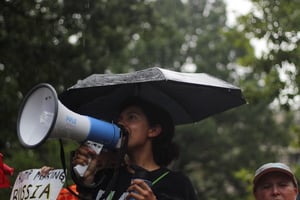Site plans are an essential part of planning for an event, as they provide a visual representation...
Outdoor Event Site Design - Fundamentals of Site Design
When planning an event, the design of the site plays a crucial role in ensuring that the event is successful. Site design refers to the layout, organisation, and infrastructure of the event site. Proper site design can help to improve crowd management, safety, and accessibility for attendees. It can also help to secure the best event insurance policy available, in particular event cancellation insurance because good site design will likely reduce the risk of event cancellation. This is most notable for festival insurance, parade event insurance or wedding insurance for example Here are some fundamental principles to consider when designing an event site:
Access + Egress
Access and egress refer to the entry and exit points for the event site. It is essential to ensure that the site is accessible to attendees and emergency services. When designing the site, consider how attendees will arrive and leave, and ensure that there are clearly marked entry and exit points. The site should be designed to accommodate the expected number of attendees and any potential emergency evacuation. You should also consider how larger vehicles such as lorries or trailers will access the site.
Circulation and Crowd Dynamics
Circulation and crowd dynamics refer to how attendees move around the event site. To ensure smooth flow and reduce congestion, it is essential to design the site to accommodate expected crowd size and behaviour. Consider the location of your main entertainment areas, entrances and exits, toilets, catering facilities, and campsites to minimise queues or overcrowding. Having determined these locations, consider the distances between them and the width of pedestrian access routes to remove any bottlenecks. Additionally, it is essential to ensure that there is adequate signage to guide attendees and provide clear directions. Many events benefit from hiring an experienced site manager or site design contractor who will account for all of these variables.
Temporary Structures
Temporary structures such as tents and stages are an integral part of an event site. They provide shelter and amenities for attendees, vendors, and staff. When designing the site, ensure that these structures are placed in appropriate locations to make them easily accessible. Additionally, it is essential to ensure that the structures are safe, stable, and can withstand any potential weather conditions, particularly high winds. You should engage a supplier of temporary structures, who should provide you with guidance on how severe weather should be managed.
Utilities and Services
Utilities and services such as power, internet, water, and waste management are essential for the proper functioning of an event site. When designing the site, ensure that there is access to these services for those that need them. For example, power outlets should be strategically placed inside temporary structures or beside catering facilities. Using a reputable event power contractor is vital to ensure this is done safely. Providing ample drinking water is crucial, and you should bear in mind that even if your site has an existing water supply, it may not be large enough for the number of attendees at your event. Most events which sell food or drink will require some degree of internet provision - a range of options are available from specialist contractors. Waste management systems should include an adequate number of bins in prominent locations, and sufficient staff to empty these and collect litter from the floor. Be particularly cautious that high winds can blow litter outside of your event site, causing environmental damage which can be harmful to your reputation. When designing your event site, remember that all utilities and services will have an impact on the safety of your audience - whether this be cables or pipes running across the ground, or vehicles moving between areas to collect waste. You should design the event layout so that these services can be undertaken without posing a hazard to your attendees.
In conclusion, proper site design is essential for the success of an event. When designing the site, consider factors such as access and egress, circulation and crowd dynamics, temporary structures, and utilities and services. Taking the time to plan and design the event site properly will help to ensure that attendees have a safe and enjoyable experience. Additionally, it will help to minimise any potential risks and ensure the smooth operation of the event. By following these fundamental principles, you can create a well-designed event site that meets the needs of your attendees and staff.
If you'd like to talk to the Vento team about event insurance in the UK, and how this relates to the site design of your event, please contact us at support@ventoinsurnace.com or get a quote on our quote builder in minutes.


